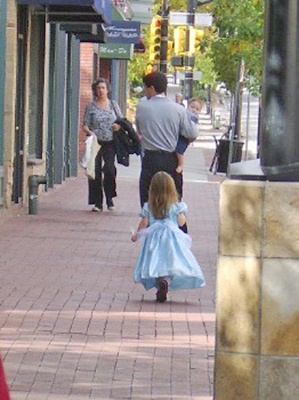All Nonfiction
- Bullying
- Books
- Academic
- Author Interviews
- Celebrity interviews
- College Articles
- College Essays
- Educator of the Year
- Heroes
- Interviews
- Memoir
- Personal Experience
- Sports
- Travel & Culture
All Opinions
- Bullying
- Current Events / Politics
- Discrimination
- Drugs / Alcohol / Smoking
- Entertainment / Celebrities
- Environment
- Love / Relationships
- Movies / Music / TV
- Pop Culture / Trends
- School / College
- Social Issues / Civics
- Spirituality / Religion
- Sports / Hobbies
All Hot Topics
- Bullying
- Community Service
- Environment
- Health
- Letters to the Editor
- Pride & Prejudice
- What Matters
- Back
Summer Guide
- Program Links
- Program Reviews
- Back
College Guide
- College Links
- College Reviews
- College Essays
- College Articles
- Back
Princess Charming MAG
Back when my family kept a VHS player in the attic, I used to sneak upstairs to watch “Cinderella” whenever I could. I wouldn't even watch the whole movie – I'd fast-forward to the end, where Prince Charming fits the rogue glass slipper onto Cinderella's slender foot. I loved knowing it was going to be a perfect fit.
It's no secret that I've always been entranced by happy endings, but the glamor of fairy tales in particular stole my six-year-old heart. Though the castles, jewels, and horse-drawn carriages are admittedly seductive, it was the perfect story arc I latched onto. It always worked out for the princesses in my storybooks: their tales had a beginning, a middle, and a neat, romantic ending under a glowing sunset or starry night. Everything was pristine, contained. I've looked and looked, but I have never been able to see the stars in New York City.
In almost every fairy tale there is a prince. It's a package deal, an added bonus to the princess job description. But even in middle school, I knew a prince was never going to be in my picture. This idea seemed like a liability, and this scared me.
The first time I said the words “I'm gay” out loud, I felt like I had just jumped off a castle turret and drowned in the moat. There was the fear of disappointing others, and the humiliation the day I came to school and saw that someone had written the word “dyke” on my locker. But most of all, my vulnerability came from the overwhelming suspicion that I had disappointed myself. After all of those years of fairy-tale fantasy, I felt as if I had given up on my own happy ending. Princesses like princes, not other princesses. It took Disney 86 years to create a black princess – imagine how long it will take for Snow White to come out as a lesbian.
My own story arc was suddenly precarious. The comfortable, conventional ending I had always envisioned no longer seemed possible. But then I graduated from storybooks and Disney movies into literature. I stumbled upon David Sedaris, Jim Shepard, and Raymond Carver, and learned that when it comes to stories (and life, really) happy endings are often the least interesting kind. When I read “Loggerheads” by Sedaris, the fact that there was no resolution, no comfortable ending, thrilled me. It was as if the glass slipper was a size too small and gave my foot blisters.
And so, I began to write. I wrote poems that didn't rhyme and stories without endings. I loved having no rules to break and no audience to satisfy but me. If the pen is mightier than the sword, I took to slaying the ignorant dragons in my life with my prose. I threw out the “Cinderella” VHS and bought a DVD of “The Queen,” turning to Princess Diana as my new royal heroine. She never got her fairy-tale ending, but she took the ancient institution of the monarchy and made it human, transforming the royal identity so that one day, perhaps, it could become rainbow. If someone like Diana could become a princess, I could, too – jean shorts and all – and happily-ever-after be damned.
Who knows if glass slippers are made in a size twelve anyway? Frankly, I'd rather wear my volleyball sneakers.

Similar Articles
JOIN THE DISCUSSION
This article has 0 comments.
